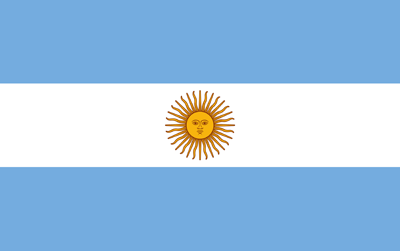Pakistan Local Cotton Market:
(The local cotton market saw increased activity due to improved supply and quality, while spinners benefited from the EFS system for imports. However, Pakistan’s cotton industry faces significant challenges, including a shortfall of four million bales and reliance on imports. Globally, cotton prices remain under pressure despite crop concerns, as weak demand and cheaper alternatives like polyester continue to affect market trends)
1- The local cotton market experienced a decline in prices, but activity saw a significant boost due to the abundant arrival of cotton from both Sindh and Punjab. With the end of the rainy season, cotton supply increased, and quality improved, encouraging buyers to stay active in the market. Additionally, the upward trend in international cotton prices further motivated buyers to continue purchasing at current levels.
2- Pakistan’s spinners were actively importing cotton under the EFS system, which offers them direct benefits. In response, local industry authorities have urged the government to provide similar incentives for domestic cotton purchases by exempting the 18% sales tax. This measure aims to protect Pakistan’s cotton industry and support local farmers.
3- Pakistan’s cotton industry faces a shortfall of four million bales this fiscal year, with cotton arrivals down 63% compared to last year. The country plans to spend over $2 billion on imports from the U.S., Afghanistan, and Uzbekistan to meet domestic and export needs. A new heat-resistant seed variety, CYTO547, is under trial, while many farmers are switching to other crops for better profitability.
4- ICE cotton prices declined for a third consecutive day despite crop concerns and positive external factors, with the December contract settling at 72.72 cents per pound, down 0.3 cents. Hurricane damage impacted key U.S. cotton-producing regions.
5- Crude oil prices rose on Friday but ended the week with losses due to expected higher global supply and Chinese stimulus measures. The rise in oil prices was insufficient to support cotton, with polyester remaining a cheaper alternative.
5- The market remained subdued despite concerns over potential cotton crop damage from Hurricane Helene in Georgia, with estimated losses between 300,000 to 500,000 bales. Initially a Category 4 storm, Helene was downgraded to a tropical storm as it moved inland. Weak demand outweighed supply risks, keeping the market trend sideways to lower.
6- Olam Group Ltd will pay a $3.3 million fine for delayed reporting of over 375,000 bales of cotton sales to the USDA and CFTC in 2021, potentially affecting cotton prices. The sales, valued at over $190 million, were reported up to five weeks late.
7- The Indian cotton yarn market saw weak demand due to sluggish activity in the fabric and garment sectors, resulting in a price decline. Despite domestic and export demand, market sentiment stayed low as mills struggled to maintain prices amid rising cotton costs. In some areas, cotton prices eased with the arrival of new crop.
8- Last week, cotton prices in Punjab and Sindh showed down trend around 10,000 to 12,000 from Rs 17,400 to Rs 18,500 per maund, (USC 0.76~0.80 lbs). In Sindh, cotton rate was Rs 17,000 to Rs 18,300 per maund, while in Punjab it ranged from Rs 17,500 to Rs 18,500 per maund. KCA dropped 12,00 to at the of.17,500 Rs per maund, PSF was same at Rs. 357 PKR/kg.
Local Yarn Market:
(The local yarn market remains subdued, characterized by limited business activity and stable prices. Suppliers struggle to maintain inventory levels and navigate a challenging economic landscape, marked by escalating energy and production costs)
1- The local yarn market remained stable in asking with pressure in sales & limited business activity Cash flow constraints persisted, hindering operations. Local cotton prices are expected to decline by Rs. 1500 per maund by the end of the week.
2- The influx of imported yarn has significantly reduced demand for domestically produced yarn and spinners balancing low inventory levels against escalating energy and production costs.
3- PSF prices remained stable this week and are projected to decrease further by Rs 3-4/kg next week.
4- The Faisalabad market had a steady demand for polyester viscose (PV) yarn and slower activity in staple yarn counts. Cash flow constraints continued to pose challenges for businesses in the region.
| Count | Price in Pak Rupees / 10 LBS | Price US$/Bale |
| 16/1 Carded Weaving | 3300 – 3400 | 480 – 495 |
| 20/1 Carded Weaving | 3400 – 3500 | 495 – 510 |
| 30/1 Carded Weaving | 3750 – 3900 | 545 – 565 |
| 20/1 Combed Weaving | 3900 – 4000 | 565 – 580 |
| 30/1 PC Carded Weaving 52:48 | 3100 – 3400 | 450 – 495 |
| 40/1 Combed Compact Weaving | 4425 – 4525 | 640 – 655 |
| 60/1 Combed Compact Weaving | 5800 – 6000 | 840 – 870 |
| 80/1 Combed Compact Weaving | 7950 – 8150 | 1155 – 1180 |
| 40/1 CVC Carded Weaving 60:40 | 3850 – 4000 | 560 – 580 |
Export Yarn Market:
(Export yarn market remained under bullish sentiment due to handsome buying form Chinese customers. Suppliers has increased their prices 3-5% which was comfortably accepted by buyers and deals were closed as well. We might see another buying spree in days to come)
1- Export yarn market showed good business activity as customers from all regions were engaged in business activity.
2- There has been an increase in prices for almost 3-5% which customers have accepted already and going forward, it seems the market will show a further rise in days to come.
3- Suppliers are quite firm and stable and increasing their prices as per their sales position. However, this week remained under bullish sentiment in prices.
4- This strong buying from customers in export have also given a upward sentiment to domestic market customers. So, we might see an uprising in domestic market as well.
5- On the other hand, European customers were actively inquiring for the urgent requirements and it seems that they will also follow this sentiment in days to come.
| Export Yarn Prices | ||||||||||||||||
|
Local Fabric Market:
(The local fabric market remained mixed as the dyeing & finishing units were aside of bulk buying however local brands were active and kept on placing orders. The home textile units are placing bulk orders on conversion mainly with sulzer looms. It is expected that business activity will further improve in the coming weeks with prices showing an upward trend)
1- The local fabric market continued to remain bearish in trend due to the absence of bulk inquiries from local finishers for both narrow and wider-width fabrics. Despite this, local brands maintained their support, placing orders after tough negotiations for their summer collections. Consequently, the week closed with limited trading activity for both fabric widths.
2- The home textile sector remains active, with continuous orders pouring into the local fabric market. Buyers are actively seeking Sulzer looms for booking on a conversion basis.
3- Finishing mills reported limited inquiries but managed to book some urgent orders at slightly increased price levels, driven by firm yarn prices.
4- Weavers have extended their bookings, with narrow-width looms now booked until early November and wider-width looms until the end of November 2024. They are currently offering onward deliveries.
5- Looking ahead, we anticipate improved trading activity in the coming weeks, with prices showing an upward trend.
Export Fabric Market:
(The export fabric market experienced positive trend as good business activity was seen from Far Eastern customers however the European and USA buyers were slow as they are keeping huge stocks with them. Suppliers are expecting good business activity in days to come)
1- The export fabric market experienced some positive trends lately as good business activity was seen during the week under review.
2- The Korean customers placed bulk orders at comparatively lower prices than the existing price level as some of the suppliers reached out to the targets, anticipating that raw material prices may lower in days to come.
3- Other customers in China, Bangladesh, Vietnam, and Indonesia also exchanged good quantities, resulting in decent order quantities placed with selected suppliers.
4- Asking prices remained stable due to stable yarn prices.
5- Most of the suppliers are keeping their prices firm due to the increase in cost of production. They prefer to refuse the orders where the targets are lower to avoid loss after sales at low prices.
6- Currently, suppliers are booked till end of Oct and offering early ~ mid-November Nov onward deliveries.
7- The European and USA buyers are keeping themselves aside of buying as they have lot of stocks.
8- Wider-width suppliers are comfortably booked till end of Nov due to good support of domestic customers.
9- Prices for wider width remained stable during the week.
| Local and Export Fabric Prices
| ||||||||||||
|
Bed Linen and Towel:
(For the home textile, a very slow market week is concluded with no significant inquiries and demands. Business activity from Europe is also slow)
1- This week focused on the closing of the market week and its after-effects.
2- The market week ended without significant outputs.
3- There were no major demands, and the flow of inquiries was poor.
4- Business activity was observed to be very slow.
5- S. buyers, in particular, were uncertain about the demand and purchasing direction.
6- Anticipation of increased inquiries and demand after Europe’s holidays has been ineffective.
7- No major flow of inquiries and demands has been observed.
8- Overall, the market remains very slow.
Garments:
(Pakistani garment manufacturers are running at good capacity and waiting for orders to fill the rest of the space also anticipating more orders; nevertheless, there is some hope that some of the country’s top retail brands have started placing orders with specific units)
1- Pakistan’s apparel industry has encountered several difficulties. Recently, Bangladesh, Vietnam, and Cambodia have become more competitive nations for low-cost apparel manufacturing, however, still, Pakistan’s apparel industry gets enough orders to fill their capacities.
2- On the other hand, dyeing units had a shortage in 3rd quarter of 2024. However, as time goes on, things are improving as a glimmer of optimism appears as brands and retailers begin to place developments for FW25 that reflect optimistic attitudes.
3- Ultimately, that will generate demand in the apparel business and result in orders in the 2024 4th quarter. However, factories are offering Mid-Dec 2024 onward deliveries.
4- Over the past few months, the Denim market has seen a significant rise in inquiries for organic cotton, recycled materials, and low-impact dyeing processes, reflecting this growing emphasis on sustainability, while also managing the pressure to keep costs neutral. Balancing sustainability with the cost-neutral demand has become a key challenge.
Crude Oil:
1- Crude Oil prices opened at USD 70.37 with lower level as compared to last week closing figures. in this week, crude oil prices showed mix trend and closed on lower side by the end of week.
2- In last day of the week, Crude Oil price closed at USD 68.18 with decrease of 2.19 USD cents as of opening figure of week.
| Opening of Week | Closing Of Week | Change | |
| Price | 70.37 | 68.18 | -2.19 |
Exchange Rate:
1- In last week values of Pak rupee apricated against US Dollar’s, other major currencies showed mix trend in both interbank and open markets.
2- At the end of week, Euro closed on a negative note with figure of 1.12 and British Pound also closed on negative note with figure 1.33 against USD.
| Selling | Buying | |
| LC Sight | 275.77 | 275.72 |
| LC 120 Days | 263.88 | 263.83 |
| Open Market | 280.98 | 274.92 |
New York Cotton Future:
The New York Cotton Futures (NYCF) began the week on a weak note compared to the previous week’s closing figures. Throughout the week, the market showed mixed trends and closed on lower side by the end of week.
1- October 2024 Closed at 73.54, marking a rise of 184 points from the previous week.
2- December 2024 Ended at 72.72, down by 72 points compared to the previous week.
3- March 2025 Finished at 74.52, reflecting an decrease of 67 points from the previous week.
4- May 2025 Closed at 75.61, showing a loss of 65 points from the previous week.
Liver Pool Indices:
1- Liverpool Index A was opened at 84.55 on higher levels from the previous week of closing figure.
2- In this week Index “A” showed a firm trend, it dropped in last session but still closed on higher side by the end of week.
3- At last day of the week, LPI “A” closed at 84.90 with an increase of 35 points.
| Opening of the Week | Closing of the Week | Change | |
| Index A | 84.55 | 84.90 | 0.35 |







